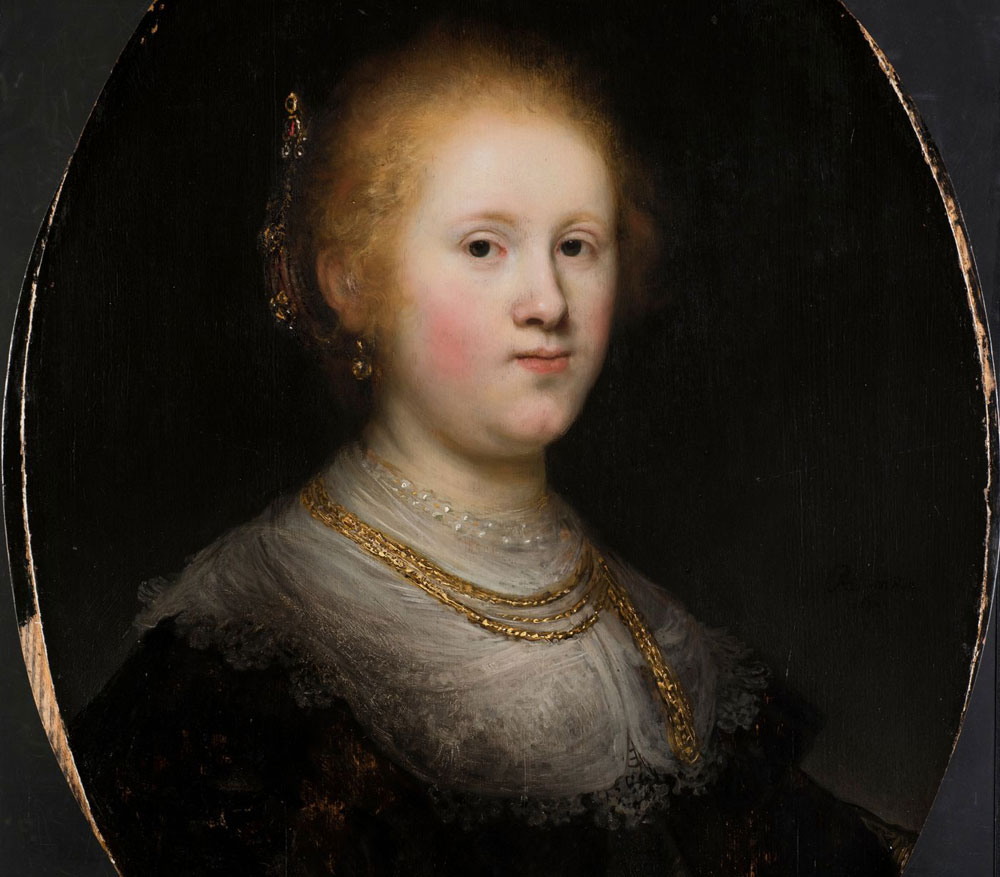
February 17, 2020; Philadelphia Inquirer
The Allentown Art Museum just announced a major piece of good news: artwork that had been in the museum’s collection since 1961, long assumed to have been produced by assistants to Rembrandt van Rijn, looks instead to have been the work of the master artist himself.
The painting, Young Woman, which had been taken out of the collection for cleaning, is now being prepared for renewed public unveiling at an exhibition that will open June 7th. The exhibit will not only feature the painting, but the story behind its once diminished and now restored status.
The story of this found masterpiece in Allentown is intriguing and speaks to the some of the challenges in the art authentication process. Back in 1961, when the donated painting came in, the museum was told the work was painted by Rembrandt in his mid-twenties. (Dating the painting puts its creation in 1632.)
“It had been in a royal collection in Paris and an aristocratic collection in England prior to crossing the Atlantic and eventually joining the collection of the Samuel H. Kress Foundation,” writes Stephan Salisbury in the Philadelphia Inquirer.
But then in 1970, the Rembrandt Research Project, a Dutch scholarly organization, said that the painting was produced in his studio by his assistants, not an original Rembrandt. And, for nearly half a century, that was that. The painting remained on display, but with less luster.
Of course, Allentown itself lost some of its luster around the same time. Yes, even though Billy Joel’s 1982 song about deindustrialization was actually about nearby Bethlehem, Allentown, too, suffered from the changing economy. Back in 1970, the department store Hess, headquartered in Allentown, did $190 million (in 1970 dollars!) in hometown sales. A 2002 book titled Allentown noted that, “While industries rose and declined…from the late 1800s until the 1970s, Allentown was the premier shopping area for miles around.… Allentown had department stores on Hamilton Street that could compete with anything in Philadelphia…sadly, all are out of business today.”
Today, there is talk—and some reality—about an economic and cultural renaissance of sorts in Allentown. Part of this has been fueled by Latinx immigration. Today, over half the city’s population is Latinx. But poverty remains a reality in Allentown. According to census figures, as of 2018, 26.2 percent of residents were in poverty (more than twice the national average of 11.8 percent). The city median income of $40,490 is also more than 30 percent less than the national average of $60,293.
Sign up for our free newsletters
Subscribe to NPQ's newsletters to have our top stories delivered directly to your inbox.
By signing up, you agree to our privacy policy and terms of use, and to receive messages from NPQ and our partners.
The museum, founded in 1934, has carried on and sought to be a partner in community revitalization, but it is not unaffected by the city’s struggling economy. The museum’s limited hours of operation—closed on Mondays and Tuesdays, open 11-4 Wednesday through Saturday, and open noon to 4 pm on Sundays—speak to this.
The morale boost of (re)authenticating the Rembrandt is palpable. “It’s very exciting, for sure,” says Elaine Mehalakes, the museum’s vice president of curatorial affairs.
The discovery process began two years ago, when Young Woman was sent out of the museum for cleaning and conservation. In the process, multiple layers of varnish and non-original paint were removed. The painting was sent to the Conservation Center of the Institute of Fine Arts at New York University, where conservator Shan Kuang labored over it.
Kuang tells Salisbury that varnish, grime, and errant paint obscured the original painting. This was the result, explains Salisbury, of what is called overpainting—“later paint added by restorers or even dealers in an effort to spruce up an artwork.” When this was removed, Mehalakes notes that telltale “elements of Rembrandt’s technique—fine brushstrokes, small touches of reflected light, subtle color changes, sparkling surfaces” became visible.
Now, Mehalakes adds, the museum-goer will be able to “see the original brushstrokes” and the colors are bright as they would have been when the original painting was completed in 1632.
“It glows,” says Mehalakes. “It’s a revelation.”
She adds, “We had no idea that this would happen. It’s like unraveling a mystery. It’s what every museum hopes.” And just possibly some of the pixie dust from the restored masterwork will boost civic spirit as well.
Before we go, we want to mention a story that this one reminded us of—a similar tale from our archive about a Rodin sculpture found at the Town Hall in Madison, New Jersey by a 22-year-old hired to catalog the art. If you like this story, you should check that one out, as well.—Steve Dubb













